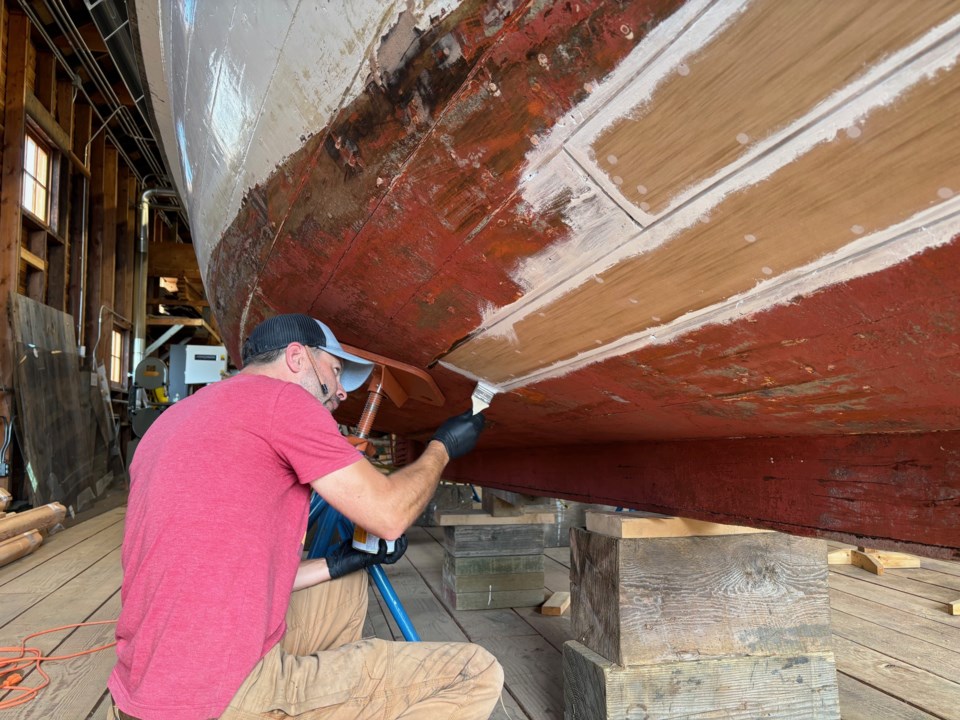The heritage boats at Britannia Shipyards are ready to set sail on a new chapter.
On July 8, city council approved the heritage boat restoration program, a two-year pilot project aimed at restoring historically significant vessels and the creation of an updated site concept plan for Britannia Shipyards.
The restoration project, including the hiring of a shipyard operations supervisor, is estimated to cost $317,000 over two years.
An additional $80,000 will be allocated to develop a site concept plan.
The eight-acre heritage park is the oldest shipyard community in British Columbia, having undergone various modifications throughout the years since the first cannery was built there in 1889.
Once a busy district of boatyards and canneries, the site now serves as a time capsule of Richmond’s cultural heritage.
The upgrades will ensure the preservation of Steveston’s maritime traditions and provide a clear vision for the future use of space and user experience at Britannia Shipyards.
While the boats are being restored, there will be live restoration viewings, hands-on interactive programs and apprenticeship opportunities.
There are currently four boats on display: the Silver Ann, MV Burnaby, Portage Queen and Small Fry.
However, there are also four non-displayed boats in need of repairs -- the Crystal S, Starliner, Iona and Fleetwood.
The Richmond News spoke with Richmond Museum and Heritage Services manager Rebecca Clarke, who highlighted the growth of the site leading up to this initiative.
“After the restoration of the Richmond Boat Builders building, we received some provincial funding to fit out the premises with all the necessary equipment to do things like first class boat restoration and boat building,” she said.
The program will primarily focus on the restoration of the Crystal S, a historic vessel donated to the city by Bud Sakamoto, a Steveston resident who built the boat with his father around 60 years ago.
Upgrades are set to begin next month and will focus on bringing the boat up to dry land display quality, with some limited work on interior or mechanical systems.
Refurbishment of the other non-displayed boats will be determined by city council in the future.
“For us, (Crystal S.) really represents the boat building heritage in Steveston,” said Clarke. “Particularly that of the Japanese-Canadian boatbuilders.”
Some minor repairs have been done to Silver Ann, an operational vessel usually found at the docks. The Crystal S. will be brought in, in early to mid-August.
Regarding the site concept plan, Clarke stated the two main goals are to create a smoother visitor experience, and to plan ahead for their expansion.
“One is to create an experience where they understand how to enter and progress through the site,” she said. “The other is looking at where we may want to expand. Rain water is the boat’s worst enemy, so looking at where we could have covered displays.”
Both of these initiatives will certainly bring life to the site, but not all is expected to be smooth sailing.
A considerable hurdle the project will need to overcome is the supply of good quality wood for restoration works, something Clarke says is a challenge these days.
“That’s something that we’ll have to monitor as we go,” she said. “We’ve already ordered wood for the Crystal S. project, but it could be an issue if there’s a long lead time to get the wood.”
“Other than that, I think we're in pretty good shape. I think we're gonna learn the challenges as we go.”
The project has been able to recruit Dave Sharp, a highly qualified shipwright with vast experience working with wooden heritage boats.
He’s been a vital part in navigating the set-up process and leading the restoration work.
Clarke underscored the cultural significance and importance of the site to the Richmond community, being one of the last of its kind and a significant landmark of Japanese heritage.
“The fishing industry has changed, there’s not as many fishing vessels out there as there used to be,” she said. “And nowadays, they are no longer built with wood.”
“I think it’s important to preserve these for the technology, the industry, and the cultural practice they represent.”
The boats allow people to connect with history in different ways, as fishing culture lives on among Steveston residents.
“Some people are very interested in the material and design of the boats, some are interested in the social history and the ‘good old days’ of the fishing industry,” said Clarke.
“The boats represent the history of Japanese-Canadians and their contributions to Steveston, so they really have a lot to offer in terms of enriching Britannia Shipyards.”
For more information on the heritage boat restoration program, visit Britannia Shipyards’ website.
Got an opinion on this story or any others in Richmond? Send us a letter or email your thoughts or story tips to [email protected]. To stay updated on Richmond news, sign up for our daily headline newsletter. Words missing in article? Your adblocker might be preventing hyperlinked text from appearing.



